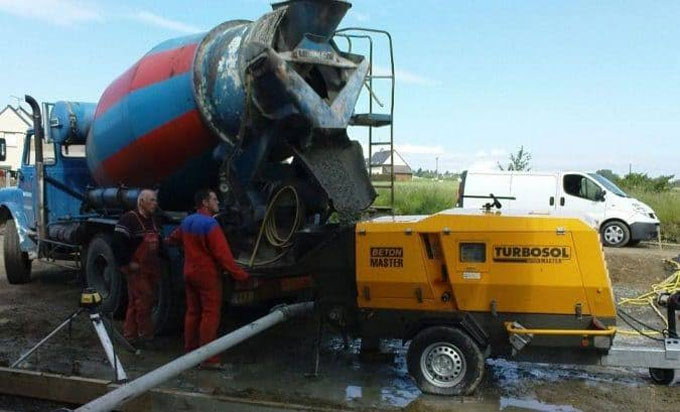
A Brief on Trailer Mounted Concrete Pumps
What is a Concrete Pump?
Previously, whenever you needed to send liquid concrete from one point in the construction yard to another, it would have had to be done using cranes or manually. It had to be done in a hurry before the cement started to set. Especially in case of building highrises, the issue became especially nagging.
Later, the application of concrete pumps made it much easier. In this machine, one piston draws liquid concrete from a hopper while the other pushes it out through the attached pipes. This became especially useful because the pipes can supply the concrete at a steady rate instead of delivering it in batches. Also, the pipe can be positioned over anywhere as needed.
Why use a Trailer Mounted Concrete Pump?
A trailer-mounted concrete pump is essentially a concrete pump that is attached on top of a singe or double-axle trailer.
Also called a static or line concrete pumps, the trailer can be easily transported from location to sites by towing it with a truck or similar vehicle. Being compact in size they can also be positioned in cramped building sides. This makes them ideal for difficult to access areas.
How it works
Ground to basics, we can say that the pump is essentially two pistons. One of the pistons will act as the suction, pulling the liquid concrete in from a small feeder enclosure.
The other piston will push out this liquid paste through a pipe that goes vertically or horizontally, distributing the concrete where needed. The whole assembly is mounted on a wheeled towable bed, or a trailer, and covered for safety.
The pumps are graded in capacity in terms of their ability to pump out concrete. This can vary from thirty to hundred-thirty cubic meters per hour. Their strength is measured in terms of how higher or further can they pump the paste, which is measured in pressure.
Steel or other kinds of pipes are attached to the output port of the pump, which transport the concrete paste to where it is needed. Additional pipes are fitted via couplings, and they are used to make bends in the pipelines too. However, for the nature of the propagate, it is advised not to put many bends in the piping system. Depending upon the pump?s strength and capacity, 75 to 200 mm diameter pipes are used.
Higher-capacity trailer mounted concrete pumps can deliver concrete to multiple locations at once. A special gate valve is used to control the flow of concrete in this case. Attached to the gate valve will be multiple pipelines to deliver the liquified concrete to its destination.
The pipeline assembly is intended to deliver the concrete wherever needed, adjusted by the construction workers. But, since steel is not flexible and rather heavy, it is not ideal to use the same at the end of the pipeline. Instead, at the end of the steel pipes, a relatively short rubber hose is attached for more locational control over cement paste discharge. For large diameter pipelines and when the concrete is to be delivered many stories high, a boom is used to carry the pipe up. A crane operates to drive this boom in its proper position.
The trailer is fed the concrete mix via a hopper, which should be placed directly underneath the output port of concrete mixers or ready-mixed concrete trucks. Empty and full liquid concrete dispensers should be juggled quickly in order to maintain a continuous flow via the pump.
Advantages of using a Trailer pump
Flexibility remains the main advantage of using a trailer-mounted concrete pump. The piping appendages can be shortened or lengthened as necessary and turned in any direction. Horizontally you can pump concrete to 2000 meters and vertically up to about half a kilometer. The pipeline can be reconfigured to deliver concrete to multiple sections in a large building site within a short time. Additionally, more than one concreting location can be served at the same time using multiple pipes.
Another point in favor of trailer-mounted concrete pumps is that they are more powerful than other types of concrete pumps. Due to space and weight limitations truck-mounted or other types of pumps are generally inferior in capacity and strength than these. Not to mention they are not as agile. Also, the pump being mobile can be placed at any location and be quickly transported to another site or station. These pumps are great to use in sites that are hard to reach for other types of concrete pumps, like bridges, tunnels, or congested urban highrises.


